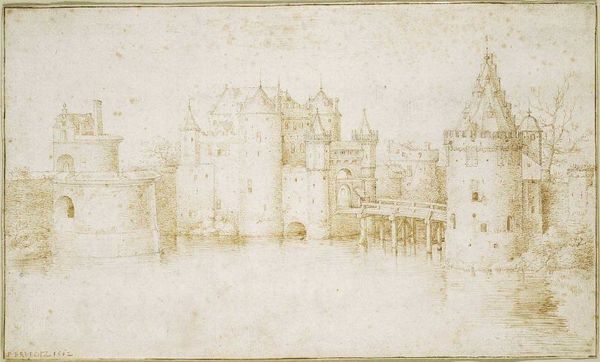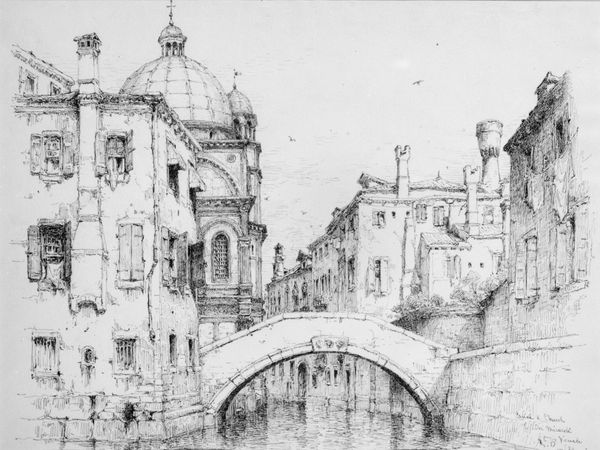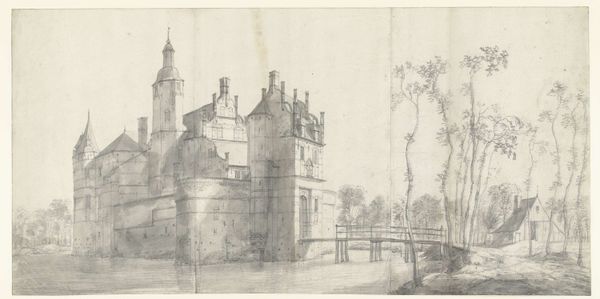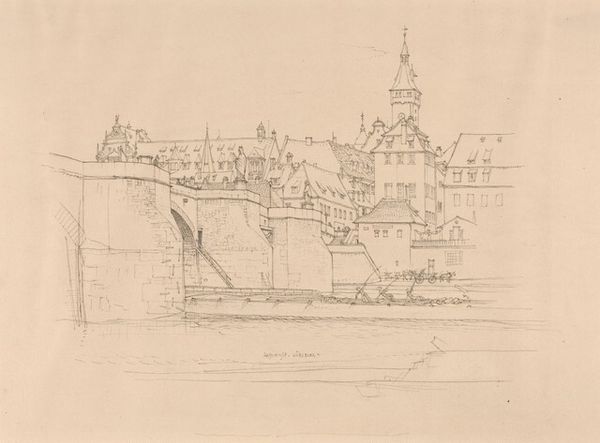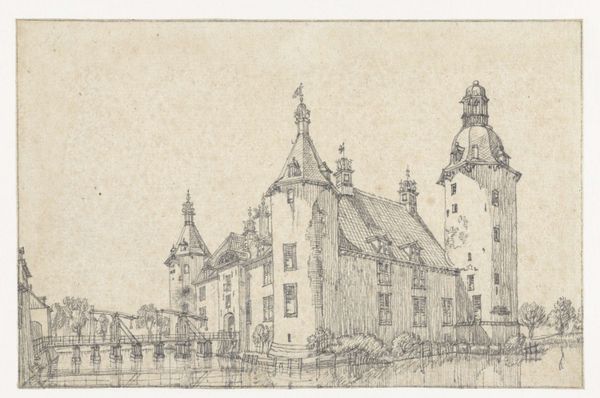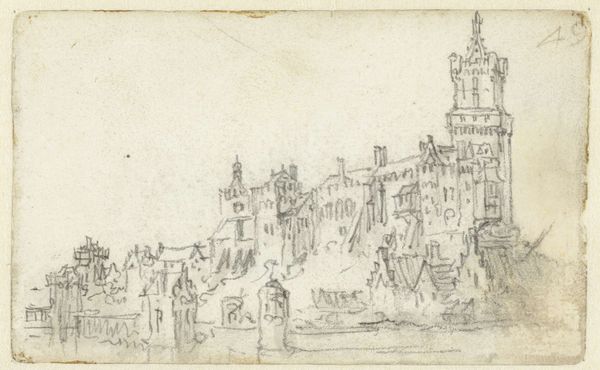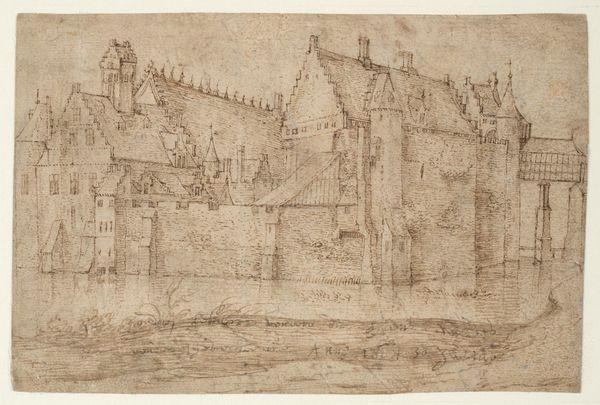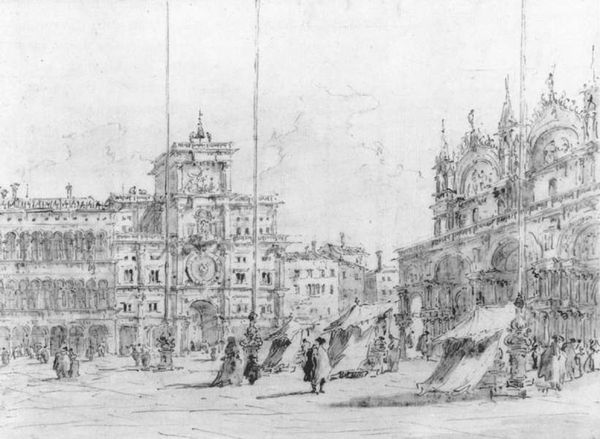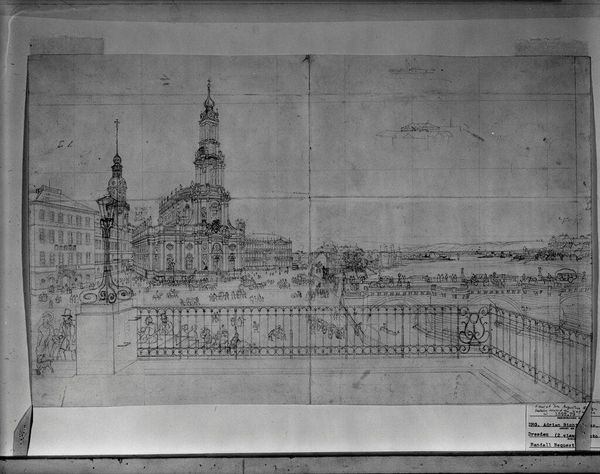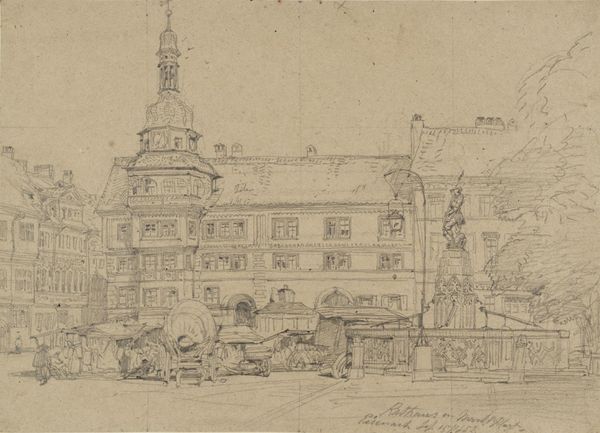
drawing, pencil
#
portrait
#
drawing
#
pencil sketch
#
landscape
#
form
#
11_renaissance
#
geometric
#
pencil
#
cityscape
#
northern-renaissance
Copyright: Public domain
Editor: So this is Albrecht Durer's "The town hall in Aachen" from 1520, a pencil drawing. It almost feels like a ghostly apparition of the building, there's such a lightness of touch. What symbols do you notice in it, standing as it does in this historical space? Curator: The town hall itself functions as a potent symbol, doesn't it? A nexus of civic power and communal identity. Durer’s choice to capture it reflects a cultural moment. The rise of the merchant class and burgeoning civic pride after the Middle Ages. He memorializes a seat of power and hints at the town's wealth. Editor: Wealth definitely shows in the geometric facade! Were there any meanings attached to building designs during that time? Curator: Absolutely. Gothic architecture, with its verticality and light, carried symbolic weight related to divinity and aspiration. Look at the pencil detail on those geometric forms! Do you see those ascending towers and intricate details as echoing earlier spiritual ascensions? Consider the window numbers and symmetry? Durer uses geometry as a symbol of control and intellect, which may mirror the growing importance of secular reasoning. Editor: That's fascinating! It is almost like this northern drawing stands as a counterpoint to a religious building like a church. Curator: Precisely. Now, what emotional resonance do you pick up from the starkness? Is it reverence or civic duty that motivates Durer here? Is there room for both? Editor: I can see both. Looking closely now, that simple pencil sketch speaks of lasting social changes that are echoed today! Thank you for pointing it out! Curator: My pleasure, it's often through these symbolic threads we connect with our history.
Comments
No comments
Be the first to comment and join the conversation on the ultimate creative platform.
